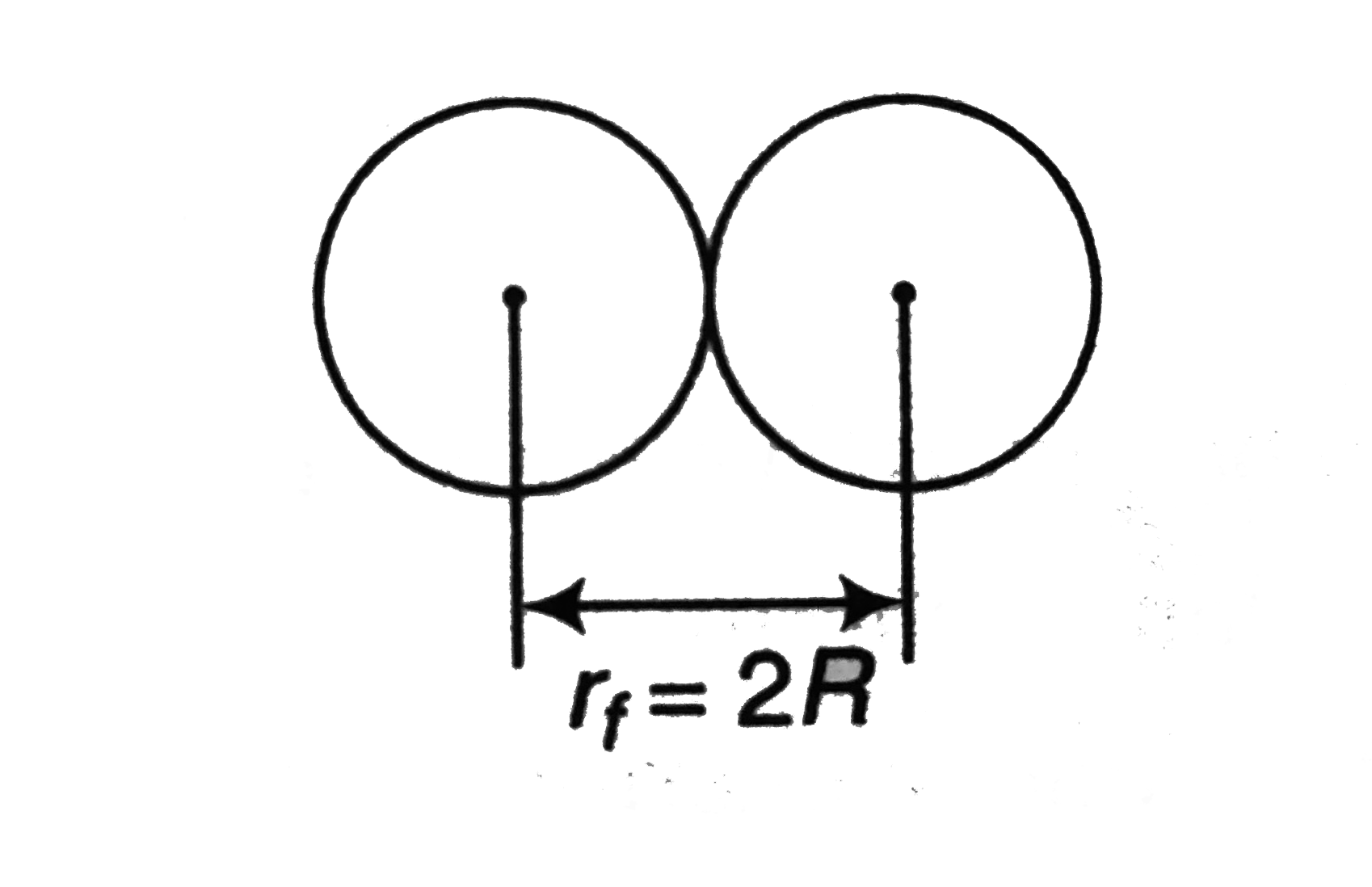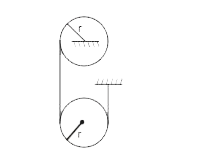Two neutron stars are separated by a distance of 1010m. They each have a mass of 1030kg and a radius of 105m. They are initially at rest with respect to each other.
As measured from the rest frame, how fast are they moving when
(a) their separation has decreaed to one - half its initial value,
(b) they are about to collide .
The correct Answer is:A, B, D
By conservation of momentum, their speeds are same. Using the energy equations we have
Ki+Ui=Kf+Uf
0−Gmmri=2(12mν2)−Gmmrf
∴ν=√Gm(1rf−1ri) ..(i)
=√Gmri
=√6.67×10−11×10301010
=8.16×104m/s
=81.6km/s

Using Eq, (i), we have
ν=√Gm(1rf−1ri)
=√6.67×10−11×1030(12×105−11010)
=1.8×107m/s=1.8×104km/s
Topper's Solved these Questions
- GRAVITATIONBOOK - DC PANDEYCHAPTER - GRAVITATIONEXERCISE - Level 2 Single Correct
22 Videos
- GRAVITATIONBOOK - DC PANDEYCHAPTER - GRAVITATIONEXERCISE - Level 2 More Than One Correct
10 Videos
- GRAVITATIONBOOK - DC PANDEYCHAPTER - GRAVITATIONEXERCISE - Level 1 Single Correct
27 Videos
- GENERAL PHYSICSBOOK - DC PANDEYCHAPTER - GENERAL PHYSICSEXERCISE - INTEGER_TYPE
2 Videos
- KINEMATICSBOOK - DC PANDEYCHAPTER - KINEMATICSEXERCISE - INTEGER_TYPE
11 Videos
Similar Questions
Two neutron stars are separated by a distance of 1.0×1011 m. They each have a mass of 1.0×1030 kg and a radius of 2.0×105 m. They are initially at rest with respect to each other. As measured from that rest frame, how fast are they moving when (a) their separation has decreased to one-half its initial value and (b) they are about to collide ?
View SolutionTwo particles have equal masses of 5.0 g each and opposite charges of +4.0×10−5C. They are released from rest with a separation of 1.0 m between them. Find the speeds of the particles when the separation is reducced to 50 cm.
View Solution
Knowledge Check
Two particles each have a mass of 6.0×10−3 kg. One has a charge of +5.0×10−6 C. and the other has a charge of −5.0×10−6 C. They are initially held at rest at a distance of 0.80 m apart. Both are then released and accelerate toward each other. How fast is each particle moving when the separation between them is one-third its initial value?
A7.3 m/sB3.9 m/sC9.7 m/sD5.4 m/sTwo parallel current carrying wires separated by distance 10 cm attract each other by force of 4×10−4N/m .If current in one wire is 10 A , then current in other wire is -
A20 AB10 AC30 AD50ATwo particles of mass m and M are initially at rest and infinitely separated from each other. Due to mutual interaction, they approach each other.
Their relative velocity of approach at a separation d between them, isA[2 GdM + m]1/2B[2 G(M+m)d]1/2C2 GM+mdDNone of these
Two point objects of masses 10 g each carry charges of opposite nature with the same magnitude of 50 μC are held at rest at a separation of 2 m. Now the point objects are released from the state of rest. Calculate the speed acquired by both the objects when separation between them reduces to half of the initial value.
View Solution10 Two particles of masses m1 and m2 initially at rest start moving towards each other under their mutual force of attraction. The speed of the centre of mass at any time t, when they are at a distance r apart, is
View SolutionTwo uniform cylinders, each of mass m=10 kg and radius r = 150 mm, are connected by a rough belt as shown. If the system is released from rest, determine
the tension in the portion of the belt connecting the two cylinders.

View SolutionTwo particles of masses m and M are initially at rest at an infinite distance part. They move towards each other and gain speeds due to gravitational attracton. Find their speeds when the separation between the masses becomes equal to d.
View SolutionTwo identical spheres each of mass M and Radius R are separated by a distance 10R. The gravitational force on mass m placed at the midpoint of the line joining the centres of the spheres is
View Solution
